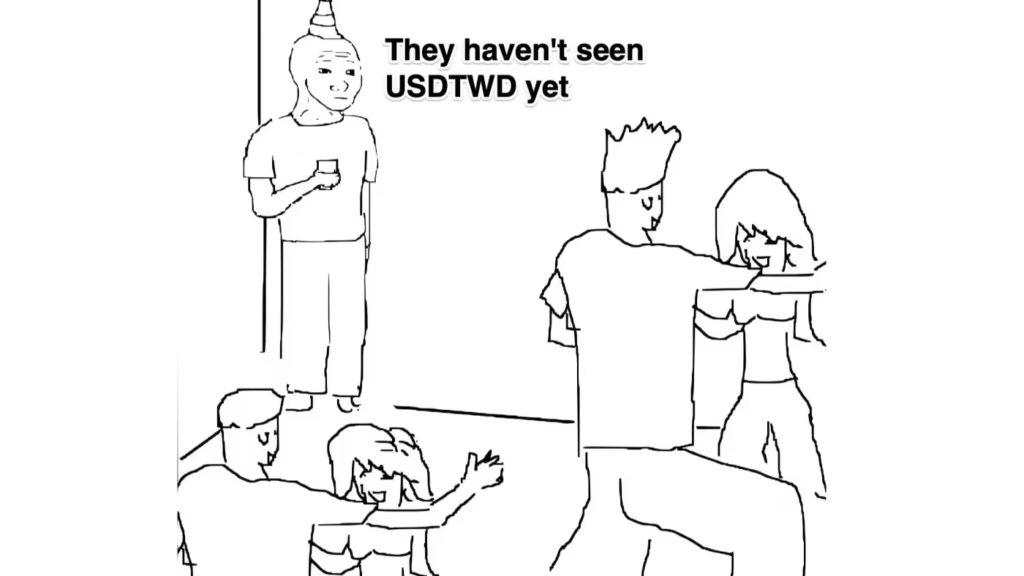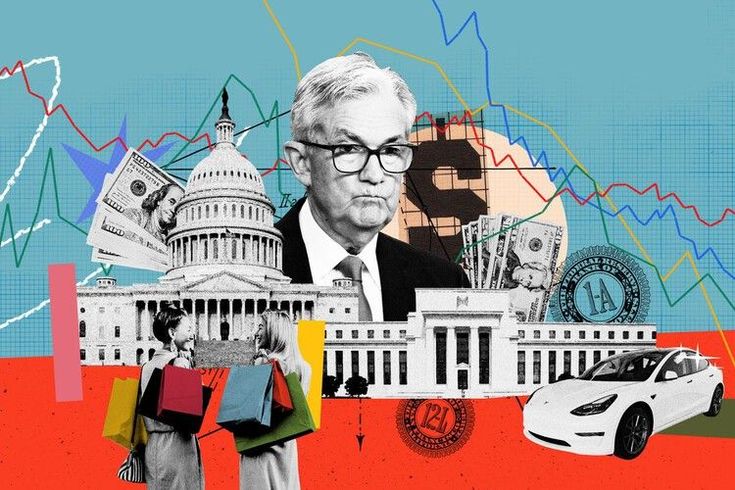On May 3rd (Korean time), at 2 AM, the dollar-won exchange rate finished trading at 1401.50 won, a sharp drop of 19.50 won compared to the closing price of the previous trading day in the Seoul foreign exchange market. The won/dollar exchange rate had closed at 1405.30 won in the previous day’s trading and continued its decline in overnight trading. During the day on May 4th, it even fell to 1365.8 won.
The exchange rate recovered to the level before the impeachment


원화 강세에 대한 원인(대만달러 강세로)
🧭 무슨 일이 벌어졌나?
- **대만 달러(TWD)**가 하루 만에 약 3% 상승, 1988년 이후 최대 상승폭을 기록하며 31.06 TWD/USD로 마감했습니다.
- 표면적인 원인으로는:
- 예상보다 높은 경제 성장률
- 미국 기술주의 호실적
- 미중 무역협상 기대감
- 대만의 무역 흑자 및 반도체 수출 강세
- 현지 생명보험사들의 외화 노출 해소 움직임
🔍 실제 원인은 무엇일까?
언론 보도는 긍정적인 투자심리를 언급하지만, 더 구조적이고 현실적인 원인은 다음과 같습니다:
🧨 대만 생명보험사들의 달러 헷지(환위험 회피) 급증
- 대만 생명보험사들은 1.7조 달러 규모의 해외 자산, 대부분 미국 국채 등 달러 자산을 보유하고 있습니다.
- 과거에는 이 외화 자산에 대해 환 리스크 헷지를 충분히 하지 않았고,
- 2025년 들어 미국 달러가 급격히 약세를 보이자, **대만 달러로 표시된 부채와 달러 자산 사이의 미스매치(불일치)**가 문제가 되기 시작했습니다.
- 이를 해소하기 위한 급격한 헷지 수요가 대만 달러 매수로 이어지며 환율이 급등한 것으로 보입니다.
🧠 왜 위험한가?
- 대만 달러가 너무 빠르게 오르면 **보험사들의 건전성(재무상태)**이 크게 흔들릴 수 있습니다.
- 중앙은행이 개입해 환율을 억제하고 싶어도, 미국 재무부로부터 환율 조작국으로 지목될 수 있는 위험 때문에 쉽지 않습니다.
- 특히 미중 관계가 민감한 상황에서, 미국의 안보에 의존하는 대만 입장에서는 미국을 자극할 수 있는 행동을 꺼릴 수밖에 없습니다.
💥 한국 원화 등 주변국 영향
- 한국 원화도 갑자기 강세 전환, 일부 보험사들이 원화를 대체 헷지 수단으로 사용한 것으로 보입니다.
- 향후 아시아 통화 전반에 헷지성 자금 흐름이 확산될 가능성도 존재합니다.
🏦 대만 중앙은행의 정책 딜레마
- 개입하면 미국과의 마찰이 우려되고,
- 개입하지 않으면 보험사들이 무너질 위험이 있습니다.
- 기존에는 보험사들이 달러를 사들이는 방식으로 대만 달러를 약세로 유도했지만,
이제는 오히려 그 반대의 방향으로 움직이며 금융시장을 압박하고 있습니다.
⏳ 앞으로 주목할 사항들
- 대만 달러는 계속 강세를 보일까, 아니면 중앙은행이 개입할까?
- 한국 등 다른 국가들은 어떻게 대응할까?
- 대만 금융당국이 보험사 건전성에 대해 입장을 밝힐까?
- 이번 환율 급등은 일시적인 스파이크인가, 아니면 구조적인 변화의 시작인가?
🧾 결론
대만 달러의 급등은 단순한 낙관론보다는 보험사들의 외화 자산 헷지 지연이 만든 구조적 위험이 표면화된 결과로 보입니다. 이는 아시아 금융 시스템의 불균형이 드러나는 신호일 수 있습니다.
The reasons of surge in KRW against USD
🧭 What Happened?
- TWD appreciated ~3% in one day — its largest one-day gain since 1988 — closing at 31.06 per USD.
- This was driven by a cocktail of:
- Upbeat GDP growth
- Positive tech earnings in the US
- Hopes of improved US-China trade relations
- Taiwan’s strong trade surplus and semiconductor exports
- Local life insurers rushing to hedge USD exposure
🔍 What Might Actually Be Driving It?
While headlines are pointing to improved sentiment and trade optimism, the more plausible, systemic cause is:
🧨 Massive USD-TWD Hedging by Taiwanese Life Insurers
- Taiwan’s life insurance companies have $1.7 trillion in foreign assets, mostly USD-denominated.
- Many of these firms did not hedge their FX risk thoroughly in the past.
- As the USD has weakened sharply in 2025, their balance sheets face major currency mismatch risks (TWD liabilities vs. USD assets).
- Now, belated hedging flows (e.g. FX forwards or swaps) may be flooding into the market, causing a sudden demand for TWD.
🧠 Why This Is Risky
- If the TWD appreciates too quickly, it could erode the solvency of insurers — particularly if they’re forced to recognize large FX losses.
- Taiwan’s central bank (CBC) has limited ability to weaken the TWD without risking US Treasury accusations of manipulation, especially amid US-China tensions and heightened geopolitical scrutiny.
- Taiwan’s closed capital account makes it harder to allow private-sector FX flexibility, compared to countries like Japan.
💥 Contagion Effects (Surge in Korea Won(KRW))
- South Korea’s won has also appreciated sharply — possibly due to Korean insurers copying the hedge strategy (as a proxy hedge).
- If this spreads to other regional currencies (e.g. Thai baht, Singapore dollar), we could see broader regional FX turbulence.
🏦 Policy Dilemma for Taiwan’s Central Bank
- The CBC is stuck between a rock and a hard place:
- Intervene and risk upsetting the US.
- Don’t intervene and risk implosion in domestic insurers.
- It previously benefited quietly from insurers doing the weakening (USD buying) on its behalf, but now that same mechanism may backfire as insurers reverse course.
⏳ What to Watch Next Week
- Will the TWD continue to strengthen — or will the CBC step in?
- Will South Korea or other central banks react?
- Will Taiwan’s financial regulators comment on solvency ratios of life insurers?
- Is this a short-term spike or a longer-term structural adjustment in Taiwan’s FX regime?
🧾 Bottom Line
The sudden surge in the TWD is less about optimism and more about a quiet systemic risk that’s finally becoming visible: a massive FX mismatch in Taiwan’s insurance sector. The surge likely reflects a panic hedging wave rather than market confidence — and it could signal deeper cracks in Asia’s capital markets.
Uh-oh, the Taiwanese dollar is having a mad one
Asset-liability mismatches FTW
you’d be forgiven for not paying much attention to Asian FX.
But here’s a humdinger of a chart showing the Taiwanese dollar’s exchange rate against the US dollar:

We’ve reversed the Y axis to show how the Taiwanese dollar has soared against the US dollar in recent days. Bloomberg informs us that this is the biggest rise since 1988. Here’s what the Borg says:
The Taiwan dollar surged the most in nearly four decades as a combo of upbeat growth data, bets on easing trade tensions and strong US tech earnings turbocharged currency gains.
It closed about 3% higher against the greenback at 31.06 on Friday, marking the currency’s largest one-day advance since 1988. The island’s benchmark stock index also climbed 2.7% to outperform the region’s equity gauges.
The Taiwan dollar, which rarely makes headlines, was at the center stage of currency market on Friday as sentiment toward the island’s assets dramatically improved after China said it’s assessing possible trade talks with the US. Data showing the island’s economy expanding at a faster-than-expected pace and hopes that US tech giants will import more semiconductors from the region also helped to fan optimism.
Unfortunately, it is a little too late to call all of our favourite TWD dealers, but Alphaville is pretty confident that these reasons are extremely tenuous. The idea that a flurry of bets that the trade war will ease suddenly sent the Taiwanese dollar to the moon is, frankly, a bit fantastical.
Advertisement
We’ll put out some feelers over the weekend, but to us this looks far more likely to be linked to an issue we highlighted at the start of the year: Taiwan has become a financial superpower thanks to its life insurance companies amassing a $1.7tn pile of overseas assets, most of which are US bonds.

However, as Brad Setser and Joshua Younger wrote at the time, “what might seem like both a reflection and source of financial and economic strength can just as easily be a glaring weakness”.
Taiwanese life insurers have apparently not been super-diligent about hedging their swelling foreign currency exposures, opening up a huge mismatch between their Taiwanese dollar liabilities and their US dollar assets.

When the US dollar’s 2025 decline suddenly began to accelerate and broaden earlier this month, it probably triggered cold sweats in certain corners of Taipei. As Setser and Younger wrote for Alphaville in January (our emphasis below):
Variants of this story have played out across Asia. The difference is simply one of scale. Taiwan’s open position is simply much larger and more precarious than that of, say, Japan’s. And for complicated reasons (related to Taiwan’s closed financial account) it cannot really be ameliorated unless the life insurers are allowed to borrow a ton from the central bank.
That means any big increase in the value of Taiwan’s dollar — an increase that is implied by the huge size of Taiwan’s trade surplus and the fact that it is still weaker against the dollar than it was 30 years ago — could obliterate the finances of Taiwan’s huge insurance industry.
To put it plainly, Taiwan’s life insurance industry has bet its solvency (with the support of its regulators) on the assumption that Taiwan’s central bank will be able to avoid a meaningful appreciation of the Taiwan dollar.
Our bet is therefore that the Taiwanese dollar’s sudden surge is caused by local life insurance companies belatedly scrambling to hedge their dollar exposures. It will be interesting to see how next week goes.
Advertisement
But there are hints that it is already causing some contagion in places like South Korea, where the won has also suddenly jumped. We gather that some insurers have used it as a proxy hedge because of the costs of hedging in dollars. NB we’ve once again reversed the Y axis to better show how the won is appreciating.

Normally, abrupt currency appreciations are a lot easier for countries to handle than violent currency swoons. After all, the local central bank can always create an infinite amount of its own currency, and simply buy overseas assets with it (viz, SNB).
However, the Central Bank of the Republic of China — as Taiwan’s is formally called — is in a bit of a pickle.
It has always been wary of being seen to be weakening the Taiwanese dollar too overtly, for fear of being labelled a currency manipulator by the US Treasury. (This is why the Taiwanese life insurers in practice doing it on Taiwan’s behalf was such a boon.)
But it will be exceptionally wary of intervening to weaken its currency at a time when the Trump administration is already on the trade war path. After all, Taiwan is almost entirely dependent on the US for military protection, and the authorities will be loath to do anything that might upset Washington at a sensitive time.



